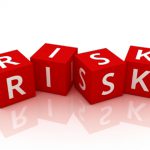 Risk and Return are Related
Risk and Return are Related
Risk is one of the most avoided, least quantified and comprehensively misunderstood subjects by those working in the financial services industry. This is unfortunate because the primary purpose of investment professionals is the intelligent management of financial risks and the alignment of an investor’s risk capacity with the appropriate exposure to financial risk and the uncertainty of future returns.
The relationship between risk and return was first described by Nobel Laureate, Harry Markowitz, in his 1952 paper “Portfolio Selection” which gave birth to the concepts known as Modern Portfolio Theory.
It comes as a surprise to many investors that the potential for financial loss is also the reason that they earn a return. We face risk because nobody can reliably predict the future – but risk, return and times are interconnected. Higher exposure to the right risk factors leads to higher expected returns, but is no guarantee of them. The bottom line is that risk must be taken to achieve a return. Risk is therefore the currency of return, in that a greater return can be considered a payment to investors for subjecting their capital to greater uncertainty.
Without the uncertainty of gain or loss, there would be no logical reason for investors to earn money. Therefore, if risk is the currency that is used to purchase returns, the questions that then arise are: what are the risk factors and how are they priced? The answers were provided in 1992 by Professors Eugene F. Fama of the University of Chicago Booth School of Business and Professor Kenneth R. French of the Tuck Business School at Dartmouth College.
Fama and French’s analysis of the sources of investment risk and return has reshaped portfolio theory and greatly improved investors’ understanding of the factors that drive equity performance. The three factors are:
• The Equities Market: Equities have higher expected returns than fixed interest.
• Company size: The shares of smaller companies have higher expected returns than the shares of larger companies.
• Company price (measured by the ratio of company book value to market equity): Lower-priced “value” shares have higher expected returns higher-priced “growth” shares.
The notion that equities behave differently from fixed interest is widely accepted. However, within equities as a whole, Fama and French find that the differences in share returns are due to company size and price characteristics. Taken together, these three factors explain more than 90% of the variation in average equity portfolios.
Because they are riskier, financially less-healthy “value” companies have higher costs of capital than financially healthier “growth” companies. For example, if a “value” company and a “growth” company each approach a bank for a loan, the “value” company will pay a higher interest rate because the bank will charge additional interest for taking on the risk that the loan might not be repaid.
Similarly, when they issue shares, the price of a “value” company’s shares is lower because the market perceives the stock to be riskier. The market drives down the price so that the expected return is high enough for investors to hold it, in spite of the extra risk. The market sets the price at a discount so the expected return is higher. This ensures the stock will be purchased even though “growth” companies have better earnings prospects and generally appear safer.
The three factor model defines risk with a precision that has made it the modern investment research standard. Size and price characteristics, along with broad stock market exposure, are the major explanatory variables in equity returns as illustrated below:


